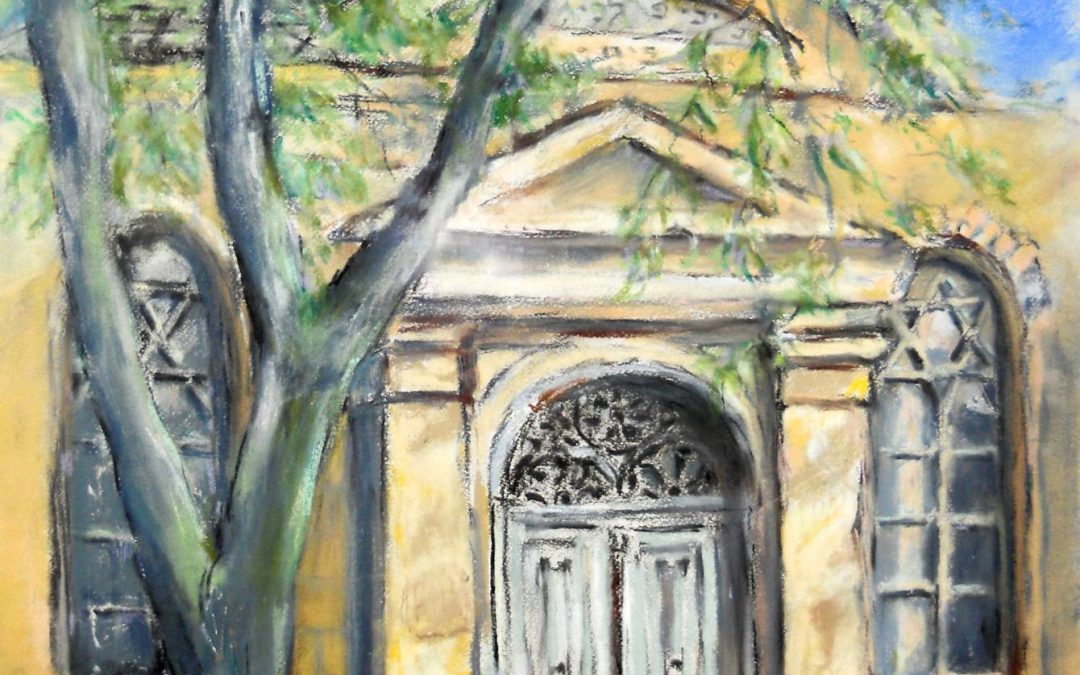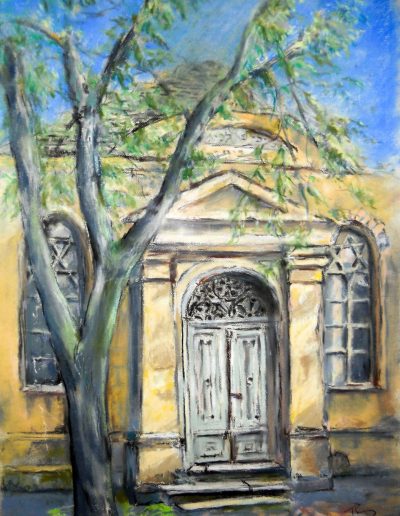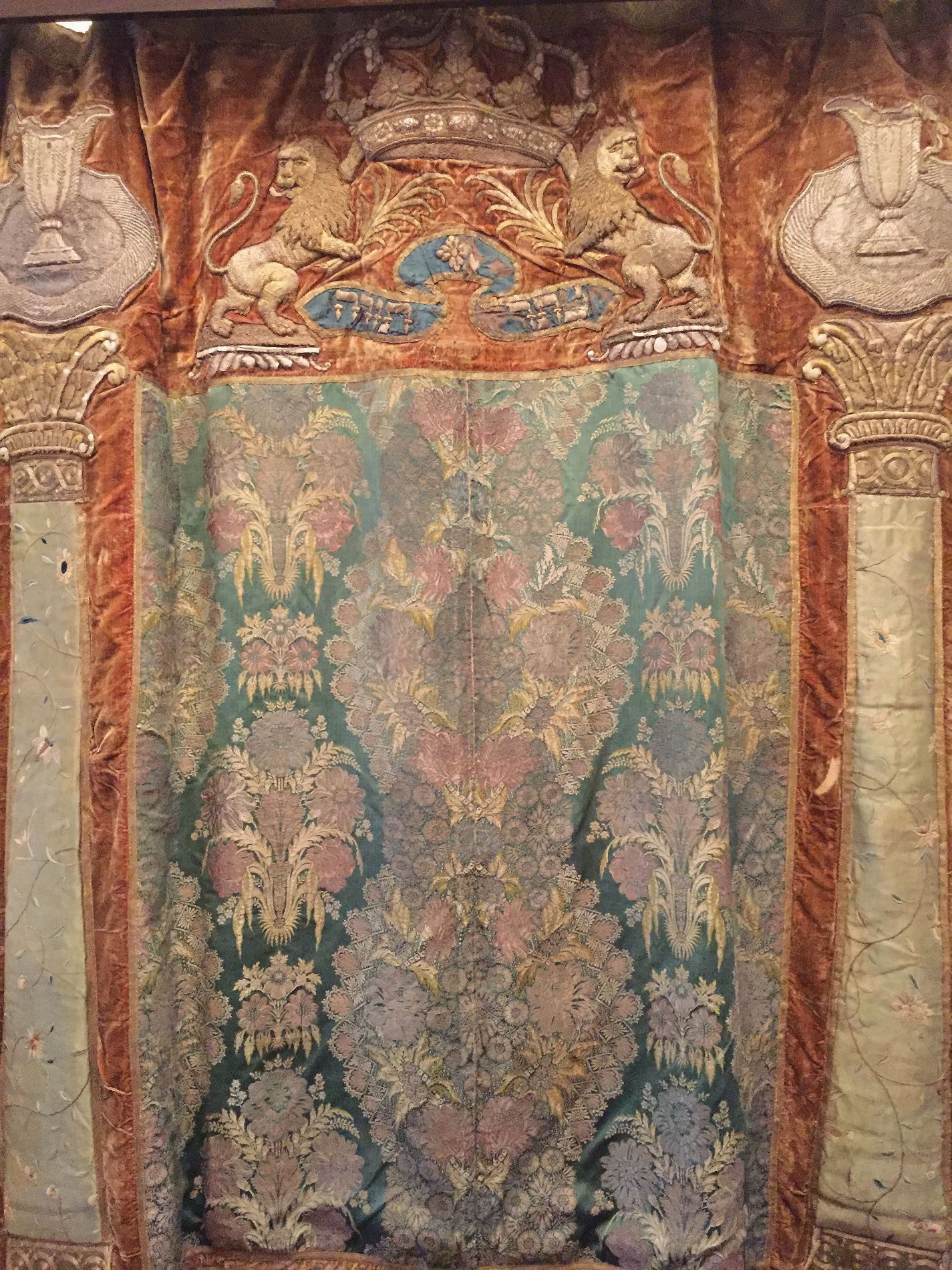We do not know in what year the synagogue was built on Ecaterina Teodoroiu Street no. 6. It is in classicist style, the Moorish decorations are missing and it is not lined up on the street, but at the end of a courtyard - indications that it was built in the middle of the 19th century. In 1905, when the Sephardic synagogue in the Citadel was demolished to make way for the construction of the community headquarters, the one in Fabric remained the only place for those who wanted to pray according to the Spanish rite. It operated until the 1950s. It was completely transformed and is now an Adventist church.
When the Sephardic synagogue ceased to exist, the furniture and some objects of worship, including the curtain (parochet) in front of the ark, were saved in the house of prayer near the New Synagogue. The richly embroidered curtain lay for several decades in a box, it was restored and now it is in the place in the courtyard of the Cetate Community headquarters, Mărăşeşti Street no. 10.
Inscription on the bottom edge:
יוסף בן הרב משה נפתלי זצ”ל וזוגתו גאלדה בת הרב יצחק קאסיל, ה’ אייר תפט לפק
(Joseph, son of Rabbi Naftali Halevi, blessed be his memory of sage, and wife of Golda, daughter of Rabbi Ithak Kasil, the fifth day of the month Iyar, 1729) indicates the name of the curtain donors and the date of donation.
It is conceivable that this object of worship, also mentioned by Rabbi Jakab Singer in his work on the synagogues of Timisoara, was offered in 1729 to a Sephardic house of prayer of which we have no knowledge, then, in 1739, used in the hall under the arch of the gate "Prince Eugene" (see Judenhof), and in 1762 he made a pilgrimage to the Sephardic synagogue on the other side of the Judenhof. When it was demolished, it reached the Sephardic synagogue in Fabric, then the Ashkenazi prayer hall next to the Fabric Synagogue. It's currently decorating the ark in the small hall "Or Hadaş" (New Light) in the courtyard of the community headquarters in Cetate.
Source: In the footsteps of the Jewish Timisoara. More than a guide. From Getta Neumann. Brumar Publishing House 2019



